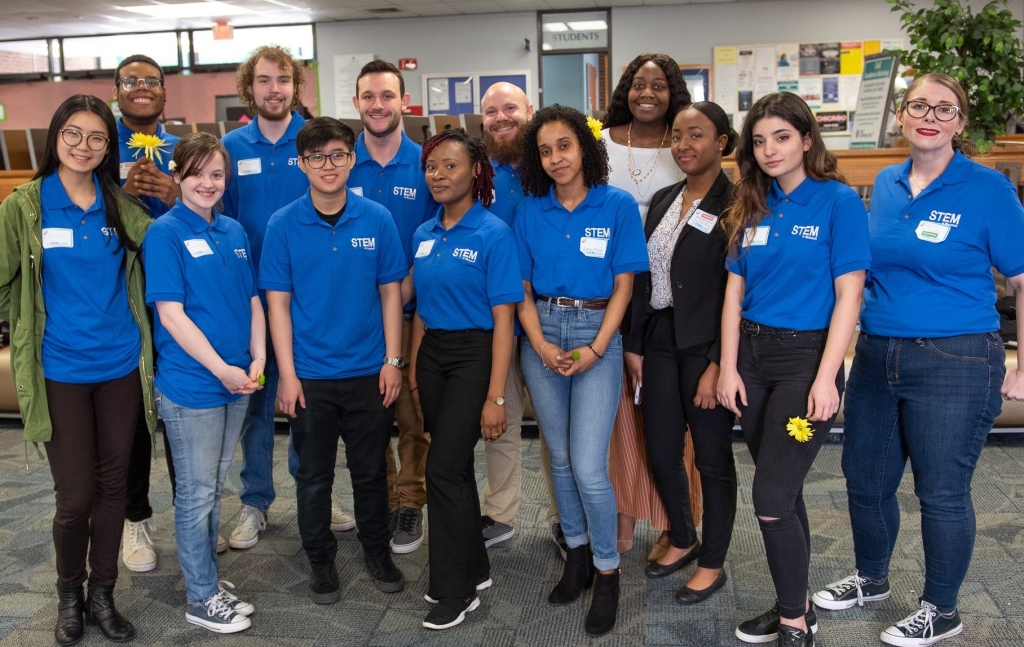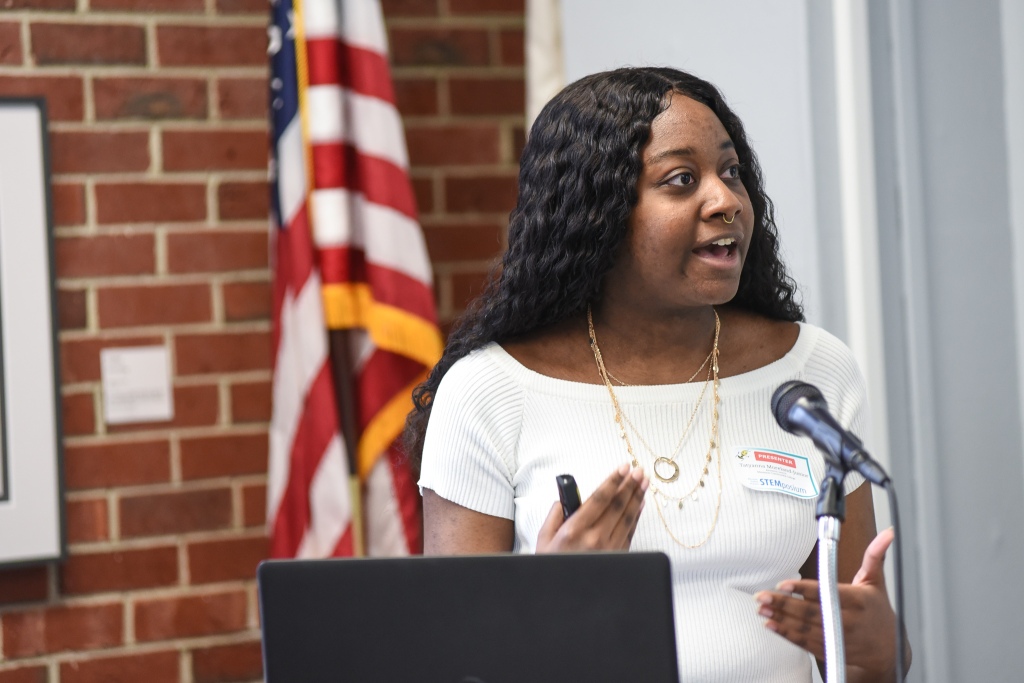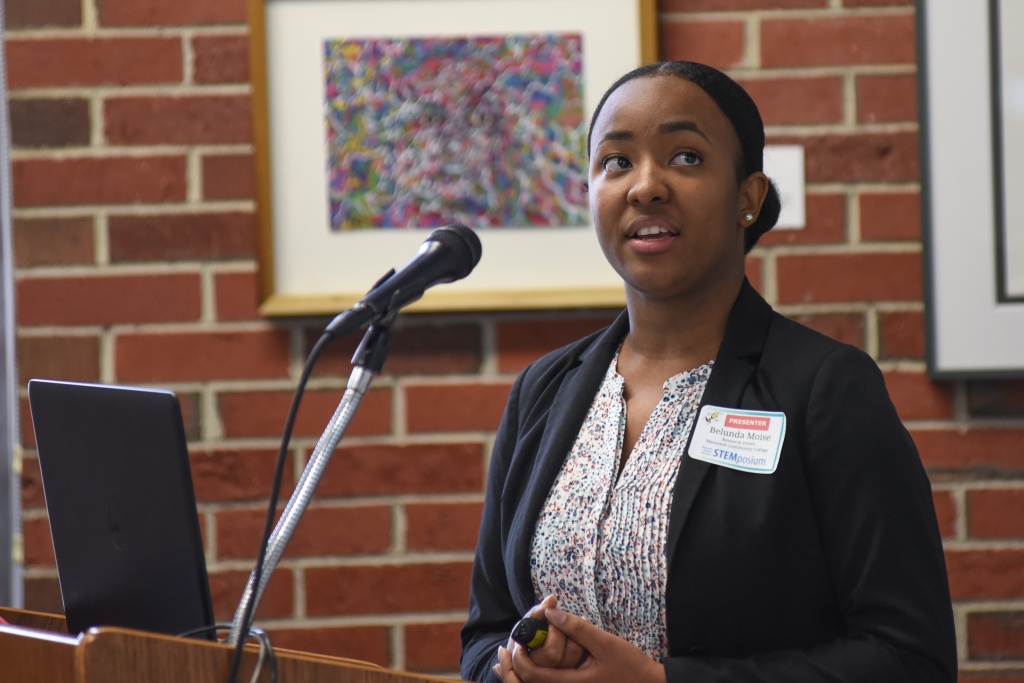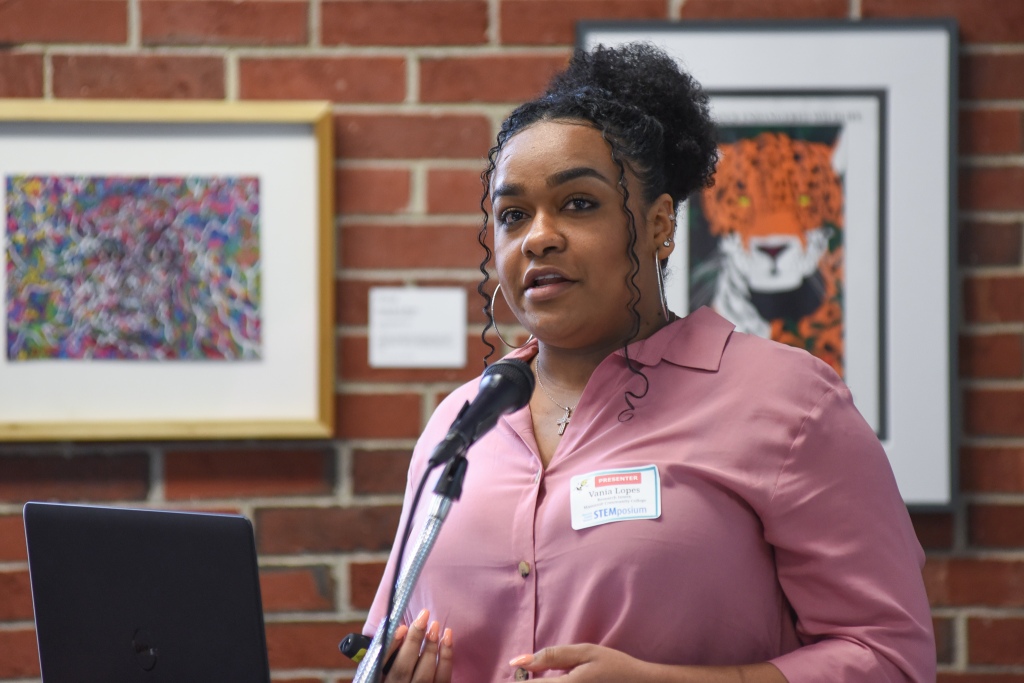STEM Research Interns are the Buzz on Campus

April 11, 2019 – Massasoit’s STEM (Science, Technology, Engineering, and Mathematics) program hosted its 5th annual STEMposium yesterday to showcase several student-led research projects, which explored the correlation between native pollinator activity (bees) and land-use practices. Follow the link at the bottom of this post to download the full research abstracts.

“Optimization of Spatial Scale in Local Land-Use Studies” – Matthew Healy
“Our results suggest that rural areas may generally provide better habitat for native bees, but better land management practices may increase abundance and diversity even in urban settings.”

“The Impact of Land-Use Practices on Ground-Nesting Bees” – Jordan Palmer
“These data suggest that rural sites may provide more resources for ground-nesting bees; however, urban areas with sustainable land-use practices may be beneficial as well.”

“Urbanization Effects on Ground Nesting and Non-Ground Nesting Bees” – Tatyanna Moreland-Junior
“Correlation strength between both ground and non-ground nesting bee abundance and richness of the two nesting guilds may have predictive value for local ecosystem health and the health of the local bee community.”

“Does Forest Cover Affect Cavity-nesting Bee Abundance?” – Belunda Moise
“In an urban/sub-urban setting, cavity-nesting bees’ abundance does not seem to have a strong correlation with forest cover, suggesting other factors such as sustainable land-use practices may be more important to help promote their community.”

“Gender Ratio in Bees as an Indicator of Ecosystem Health” – Vania Lopes
“This suggests that sex ratio may be more sensitive to year-to-year ecosystem variation compared to Osmia abundance.”

“Changes in Genus Lasioglossum Over Time” – Douglas Phinney
“Using a priori contrast we were able to see that sites with sustainable land use practices in place have significantly higher abundance compared to those without.”

“Using DNA Barcoding to Study Foraging Habits of Bees” – Zachary Thuotte
“This type of information could be particularly useful in an agricultural setting where interactions between nesting preferences, foraging preferences and crop pollination might be established.”

“Relationship Between Kleptoparasite Nomada Abundance and its Host Genus’” – Kinga Auguste
“Human activity appears to influence the abundance of Nomada, and variation observed in the strength of the host-parasite relationship suggests that monitoring this marker could yield new insight on the health of the bee community.”